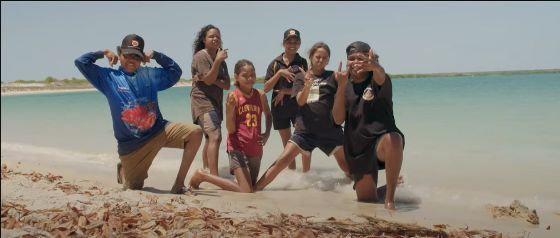
By Olivia Henry, the Australian Science Media Centre
A large skin-health study has halved the rate of skin infections experienced by Aboriginal children living in remote communities, with regular skin checks key to the stunning result.
Led by The Kids Research Institute Australia (formerly Telethon Kids Institute) and Aboriginal health organisations in close partnership with nine Aboriginal communities in Western Australia’s Kimberley region, the five-year SToP Trial set out to identify the best possible methods to 'See, Treat and Prevent' painful skin sores and scabies.
While the trial ran for five years, the findings are the result of a decade of work that started after previous research found Indigenous kids living in remote areas of Australia had the highest rate of skin infections in the world, and the prevalence was making it become normalised both in the clinics and at home.
Professor Asha Bowen, the lead investigator for the SToP trial, told the AusSMC that the importance of healthy skin can often be ignored.
“Sometimes we think the skin is, you know, on show, it's the largest organ of the body – perhaps it doesn't really matter that much to our overall wellbeing. But in fact, it really matters to our overall health.”
“There are many downstream complications [of various skin conditions] with significant mortality rates for children and adults,” she said.
In fact, in many remote parts of Australia the researchers were seeing a six-fold higher rate of staph infections and sepsis, as well as a 50 to100 times higher rate of rheumatic fever of remote living Aboriginal people.
At the beginning of the study, Professor Bowen said four in ten kids had skin sores. By the end of the trial, it had dropped to just two in ten.
The success of the study was in large part due to the community-led approach, with school skin checks accompanied by healthy skin books and resources translated into local languages, and even a hip-hop video made by kids in the community.
"We knew from the very beginning that the community voice would be critical to helping us understand what happened across the course of the trial," Dr Hannah Thomas, lead author of the papers told the AusSMC.
“[There was an] enormous number of people that have been incredibly generous in sharing their time and wisdom with us,” she said.
Communities emphasised the importance of informed choice – with clinics giving parents a choice of medicine (rather than a single standard-of-care) to treat skin infections highlighted as especially beneficial.
Having bush medicine available was also important, with patients being more willing to visit clinics that included bush medicines in their practice.
“That message from community that having access to bush medicines in the clinic increased the cultural safety of the clinic, I think, is a really powerful one,” Professor Bowen said.
“We had lots and lots of people in those communities particularly, telling us about how that had really changed the trust and relationship with the clinical service providers and the the willingness or enthusiasm of people to attend clinic,” Dr Thomas added.
The researchers also reported feedback from the community that school health nurses were seen as particularly valuable, and that skin checks should continue for both kids and adults.
With community enthusiasm and participation like this, the researchers hope to continue to see skin infection rates fall in these communities – which could lead to lower rates of more serious illnesses, including chronic kidney disease and rheumatic heart disease.
“If you've got less kids with skin sores, then you're going to have less opportunity for those strains to transmit between children, and therefore less kidney disease,” Professor Bowen said.
“Ultimately, this sort of programmatic approach to healthy skin is really the foundational piece to preventing hospitalisations and early mortality that we see for Australian remote living Aboriginal people currently.”
“I hope that as we continue to drive down the burden of skin infections… we will then see less rheumatic fever, less kidney disease, less sepsis, and healthier kids with healthier lives.”
You can find the research here
This article originally appeared in Science Deadline, a weekly newsletter from the AusSMC. You are free to republish this story, in full, with appropriate credit.
Contact: Olivia Henry
Phone: +61 8 7120 8666
Email: info@smc.org.au